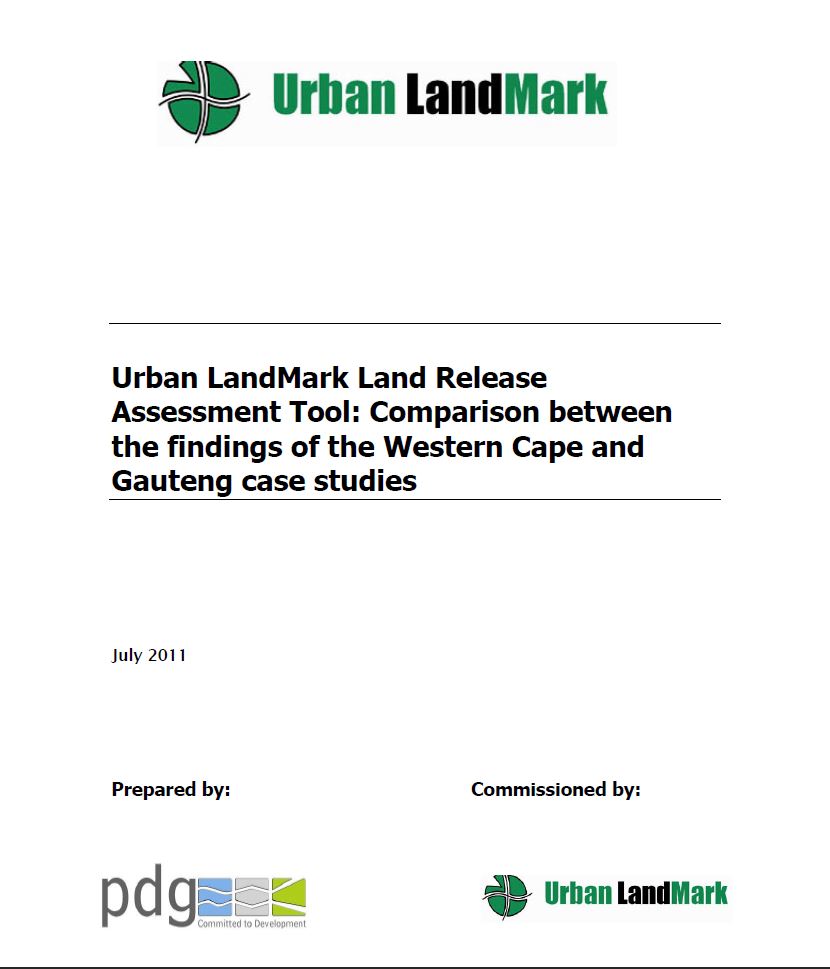Land release assessment model
Tool and case studies

In 2009, in collaboration with the Western Cape Department of Human Settlements and the City of Cape Town, Urban LandMark commissioned Eighty/20 and Palmer Development Group (PDG) to develop an approach to assess the cost and benefits of different residential land uses resulting from public land release programmes in the Western Cape. The different residential land uses include market-driven housing, so-called gap housing, and subsidy housing.
The assessment framework consists of three components made up of a preliminary assessment framework and a qualitative and quantitative framework. The preliminary assessment framework can be used to quickly assess the suitability of a particular residential land use on a specific site. The qualitative framework can be used to identify and rank the importance of those costs and benefits resulting from a particular residential land use that cannot easily be quantified. The quantitative framework is an excel-based financial model which undertakes a cost/benefit analysis from the perspectives of the state, developer and resident households. The overarching framework was developed and first tested in two case study areas in the Western Cape.
In 2011, Urban LandMark commissioned PDG to further apply the Land Release Assessment model in two Gauteng case studies - Cosmo City and Pennyville - to build on the existing database of key inputs into the model, to further test the model, and to compare the Gauteng experience with that of the Western Cape.
Project outputs include:
- a high-level 'showstopper' tool to rapidly exclude from the assessment land uses that are simply not viable
- a financial model, projecting cash flows associated with the housing development from the perspective of households, the state and developers
- a qualitative assessment tool to guide a review of those factors that impact on land use decisions that are not easily quantified, considering the perspectives of households and the state
- four case study applications - two in the Western Cape and two in Gauteng (Cosmo City and Pennyville) - which use the cost-benefit analysis model to evaluate the cost-effectiveness of these public land release projects from the state, developer and household perspectives
- a comparison between the Western Cape and Gauteng case study findings.
Presentations on the methodology, financial model, decision support tools, case studies and project findings have been made available to key stakeholders to the process, including the Housing Development Agency, the National and Western Cape Departments of Human Settlements, the Cities of Cape Town and Johannesburg, and private developers participating in the case studies.
Abstract based directly on original source.


Comments